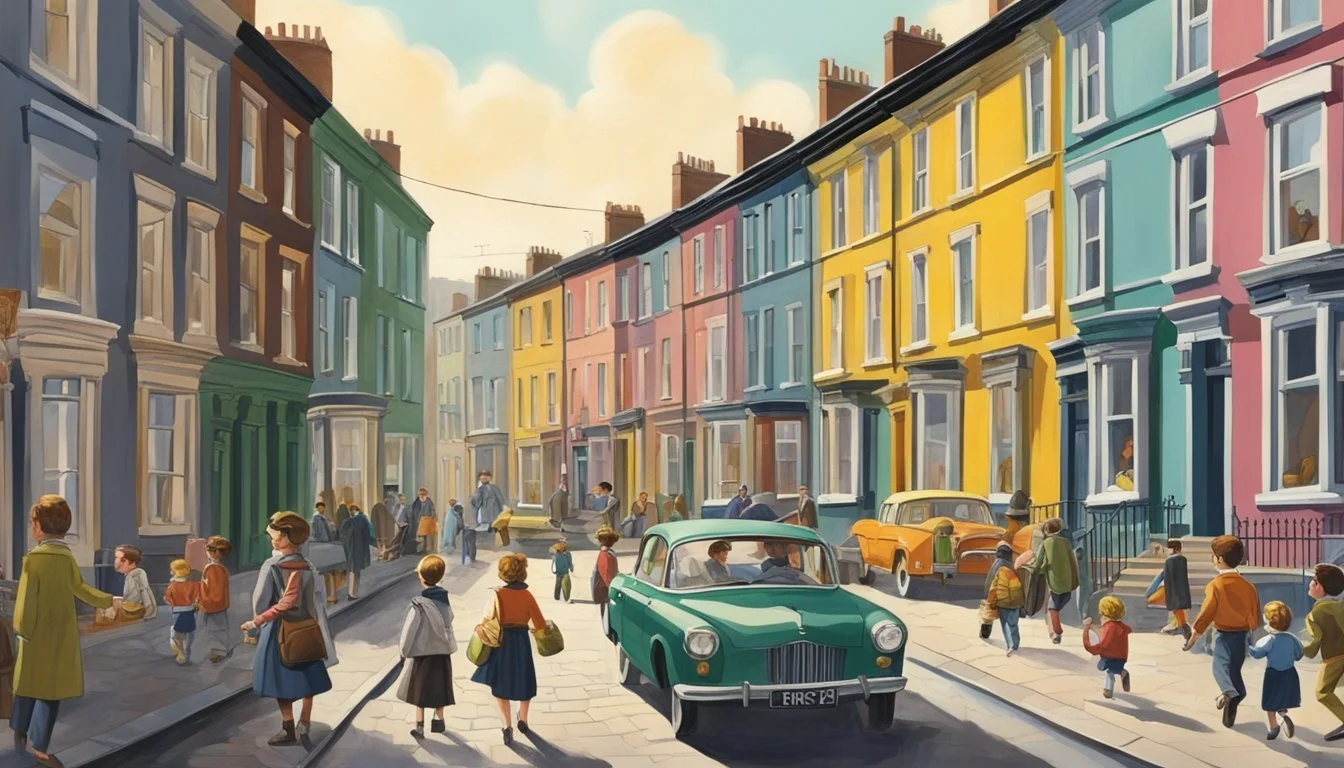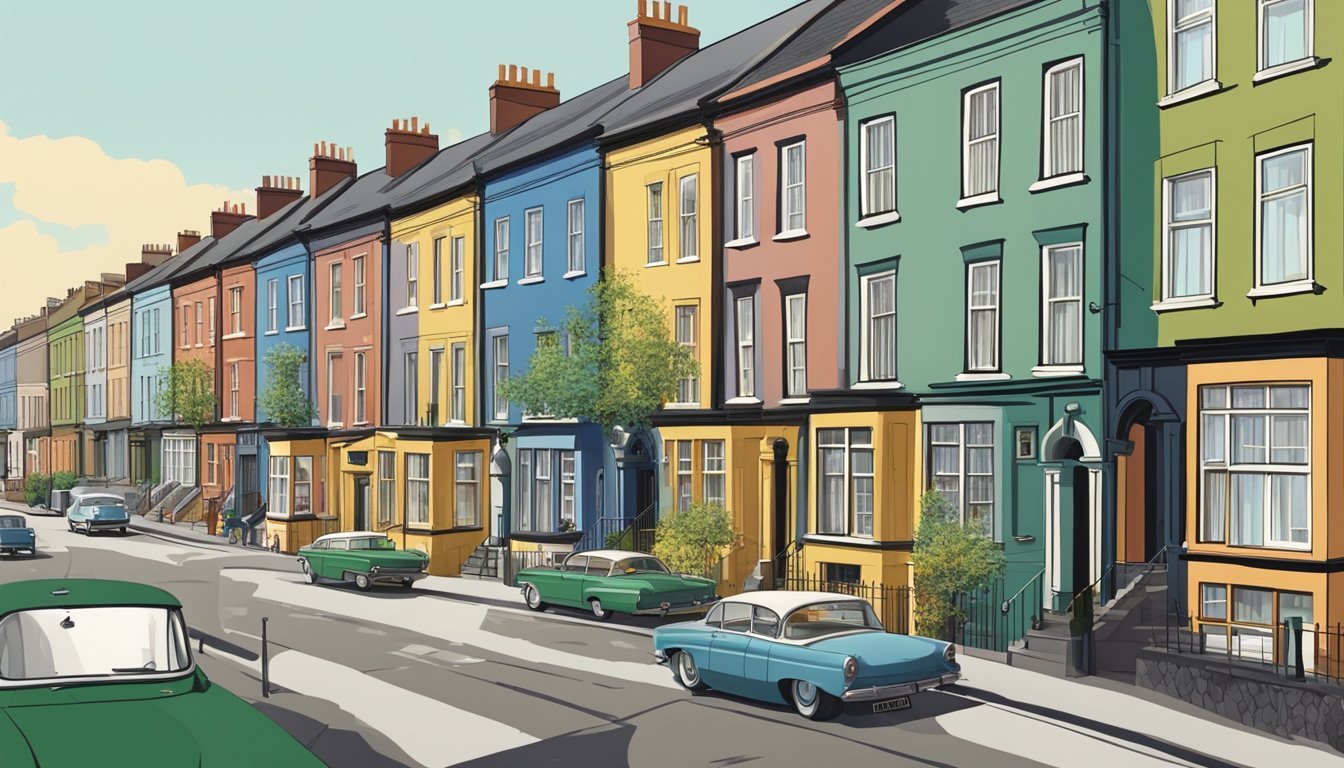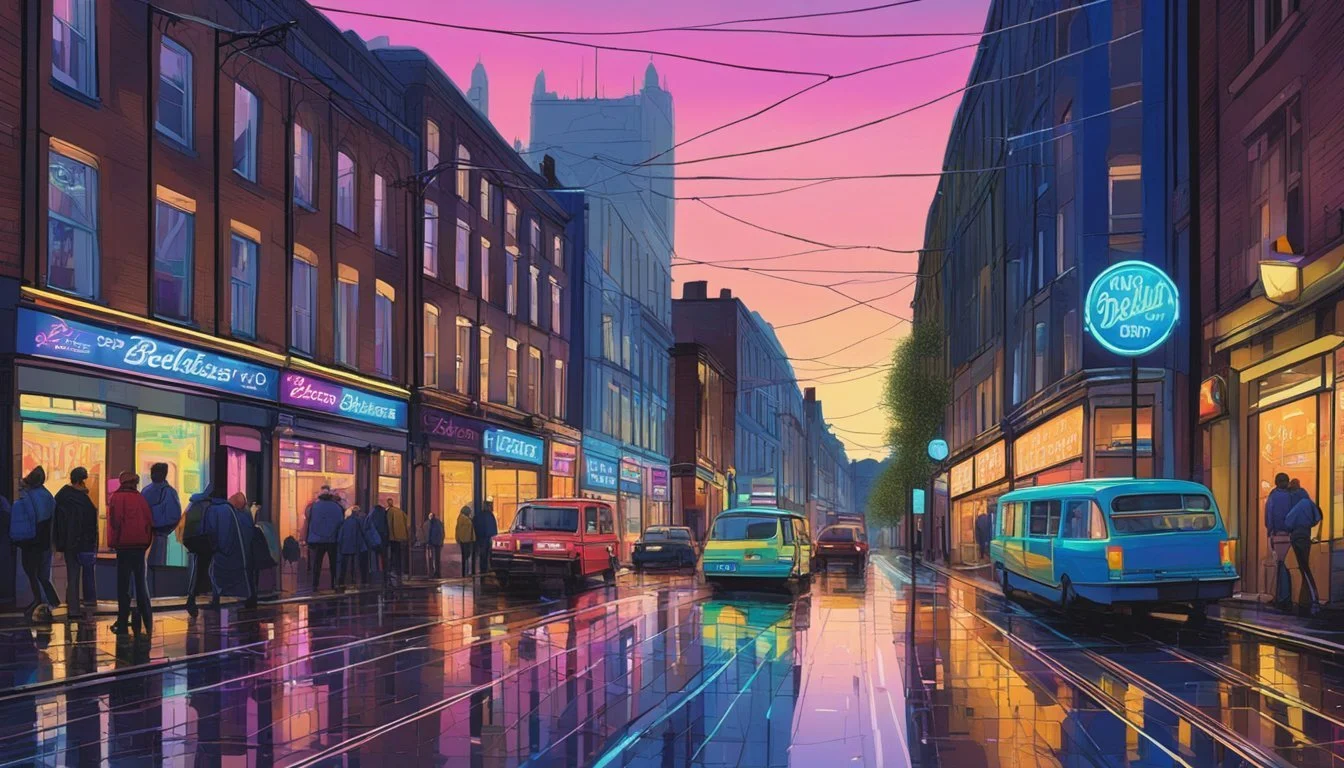Troubles in Technicolor: The Personal History Behind 'Belfast'
Branagh's Cinematic Memoir
Kenneth Branagh's film "Belfast" offers a deeply personal glimpse into the director's childhood during the tumultuous period of Northern Ireland's history known as the Troubles. Set in 1969, the movie follows nine-year-old Buddy as his carefree world is shattered by escalating sectarian violence in his hometown. The film draws heavily from Branagh's own experiences growing up in Belfast and his family's subsequent move to England to escape the conflict.
Through the eyes of young Buddy, portrayed by newcomer Jude Hill, viewers witness the stark contrast between the warmth of family life and the harsh realities of a city torn apart by civil unrest. Branagh's decision to shoot primarily in black and white, with occasional bursts of color, serves as a visual metaphor for the loss of innocence and the intrusion of conflict into everyday life.
While "Belfast" is not a strict autobiography, it captures the essence of Branagh's childhood memories and the historical context of the 1969 riots. The film explores themes of identity, belonging, and the difficult choices families faced during this period. By blending personal recollections with historical events, Branagh creates a poignant narrative that resonates beyond his own story, offering insight into a pivotal moment in Irish history.
The Setting of 'Belfast'
'Belfast' takes place during a pivotal moment in Northern Ireland's history. The film captures the city's atmosphere as it teeters on the brink of profound change.
Belfast in 1969
Belfast in 1969 was a city on edge. The capital of Northern Ireland stood as a mix of working-class neighborhoods and industrial areas. Terraced houses lined narrow streets, their brick facades a testament to the city's industrial past.
Shipyards and factories dominated the skyline, providing employment for much of the population. The city center bustled with activity, featuring department stores, cinemas, and pubs.
Children played in the streets, while adults gathered on stoops to chat. Despite underlying tensions, many neighborhoods maintained a strong sense of community.
The Political Landscape
The political situation in Belfast was volatile. The city was sharply divided along sectarian lines, with Protestant and Catholic communities often living in separate areas.
Tensions had been building for years over civil rights issues and political representation. Unionists, primarily Protestant, sought to maintain Northern Ireland's place within the United Kingdom. Republicans, largely Catholic, pushed for a united Ireland.
This divide manifested in various ways:
Segregated schools and housing
Unequal employment opportunities
Disputes over political power-sharing
The summer of 1969 saw an escalation in violence, marking the beginning of what would become known as "The Troubles".
Cultural Backdrop
Belfast's cultural scene in 1969 reflected both its industrial heritage and the growing global influence of the 1960s. Traditional Irish music thrived alongside the latest pop hits from Britain and America.
Local pubs served as community hubs, offering live music and a place for social gatherings. Cinema was popular, with American and British films drawing large crowds.
Religion played a significant role in daily life:
Catholic churches held regular Masses
Protestant churches conducted Sunday services
Religious symbols were prominently displayed in homes and public spaces
Despite the growing tensions, many Belfast residents attempted to maintain normal lives, attending football matches, dances, and other social events.
The Story's Protagonist: 'Buddy'
At the heart of 'Belfast' is Buddy, a young boy navigating the complexities of childhood amid rising tensions in Northern Ireland. His experiences, relationships, and perspective shape the narrative and offer a poignant glimpse into life during The Troubles.
Jude Hill's Performance
Jude Hill brings Buddy to life with remarkable authenticity. His portrayal captures the innocence and curiosity of a child grappling with the changing world around him. Hill's expressive eyes and natural charm convey Buddy's emotions, from wonder to fear, as he witnesses his city transform.
The young actor's performance stands out alongside seasoned veterans. His interactions with Jamie Dornan and Caitriona Balfe, who play his parents, feel genuine and heartfelt. Hill's chemistry with Judi Dench, cast as Buddy's grandmother, adds warmth to their scenes together.
Childhood Amidst Conflict
Buddy's childhood unfolds against the backdrop of escalating violence in Belfast. He experiences the shift from peaceful coexistence to sectarian divisions firsthand. The film portrays his attempts to make sense of adult conflicts through a child's eyes.
Everyday activities take on new significance. Playing in the streets becomes risky. School friendships are tested by religious differences. Buddy's love for reading and cinema offers escape, allowing him glimpses of a world beyond the barricades.
His journey reflects the loss of innocence many children faced during The Troubles. Yet it also showcases resilience and the enduring power of imagination in difficult times.
Buddy's Family Life
Family plays a crucial role in Buddy's story. His parents, portrayed by Jamie Dornan and Caitriona Balfe, struggle to protect their children while facing tough decisions about their future. Their love provides stability amid chaos.
Buddy's relationship with his grandparents, especially his grandmother (Judi Dench), is particularly touching. They offer wisdom, comfort, and a link to Belfast's past. Through them, Buddy learns about his heritage and the complexities of belonging.
Financial pressures and the threat of violence strain family bonds. Yet these challenges also highlight the strength of their connections. Buddy's family life becomes a microcosm of the larger community's experiences during this turbulent period.
Kenneth Branagh's Personal History
Kenneth Branagh's journey from Belfast to acclaimed filmmaker shaped his artistic vision. His experiences during the Troubles and passion for storytelling influenced his work profoundly.
From Belfast to Storyteller
Kenneth Branagh was born in Belfast in 1960. At age nine, his family fled Northern Ireland due to the outbreak of the Troubles. This pivotal moment left an indelible mark on young Branagh.
After relocating to England, Branagh discovered his love for acting and literature. He excelled in school productions and developed a particular fondness for Shakespeare's works.
Branagh's talent led him to the Royal Academy of Dramatic Art. There, he honed his skills as an actor and director.
Influences on Branagh's Filmmaking
Branagh's Belfast roots and early exposure to conflict informed his storytelling approach. He often explores themes of identity, displacement, and human resilience in his films.
Shakespeare remains a significant influence on Branagh's work. He has directed and starred in multiple Shakespeare adaptations, including a full-length "Hamlet" in 1996.
Branagh's autobiographical elements frequently appear in his films. "Belfast" marks his most personal project, drawing directly from his childhood experiences.
His versatility as an actor enhances his directorial style. Branagh's intimate understanding of performance translates into nuanced character portrayals in his films.
Recreating Historical Events
Kenneth Branagh's "Belfast" vividly brings to life the tumultuous period of Northern Ireland's history known as The Troubles. The film meticulously recreates key events while exploring their impact on families and communities.
Depicting 'The Troubles'
The film opens with a powerful scene depicting the August 1969 riots in Belfast. Branagh employs a 360-degree pan to capture the chaos as violence erupts on a previously peaceful street. This technique immerses viewers in the sudden upheaval faced by residents.
The British Army's presence, part of Operation Banner, is portrayed through tense interactions with locals. Checkpoints and armored vehicles become a common sight, reflecting the militarization of daily life.
Protests and civil rights marches are recreated with attention to period detail. The film shows how these events often escalated into violent confrontations between demonstrators, police, and opposing factions.
Authenticity in Storytelling
Branagh draws from his personal experiences growing up in Belfast during this period. This firsthand knowledge infuses the film with authentic details of life amidst conflict.
The director's choice to film in black and white enhances the historical feel. It also serves as a visual metaphor for the stark divisions of the time.
Careful attention is paid to recreating the look and atmosphere of 1960s Belfast. From street scenes to interior decor, the film transports viewers to that specific time and place.
Family Dynamics During Turmoil
"Belfast" focuses on how The Troubles affected ordinary families. It explores the difficult choices faced by parents trying to protect their children from trauma and violence.
The film depicts the strain placed on relationships as families grapple with whether to stay in their homes or seek safety elsewhere. This reflects the real-life experiences of many Northern Irish families during this time.
Branagh shows how children like his protagonist Buddy struggled to understand the sudden changes in their world. The loss of innocence and the impact of constant tension on young minds are key themes.
The Film's Cultural Significance
"Belfast" resonates deeply with audiences through its portrayal of a pivotal historical moment. The film's impact extends beyond storytelling, touching on themes of identity, community, and the power of art during tumultuous times.
Cinema as a Reflection of Society
"Belfast" serves as a cinematic mirror to Northern Ireland's complex history. It captures the tensions and divisions of the Troubles era, offering viewers a glimpse into a community grappling with profound change. The film's black-and-white cinematography evokes a sense of memory and nostalgia, while simultaneously highlighting the stark realities of the period.
Through its narrative, "Belfast" explores the universal themes of family, belonging, and the struggle to maintain normalcy in extraordinary circumstances. It portrays the resilience of a community facing upheaval, resonating with audiences who have experienced similar conflicts or societal shifts.
Music and Memory
Van Morrison's soundtrack plays a crucial role in "Belfast," enhancing the film's emotional impact. His music serves as a cultural touchstone, evoking the spirit of the era and the city itself. The songs act as a bridge between past and present, connecting viewers to the characters' experiences.
Morrison's lyrics and melodies intertwine with the narrative, amplifying key moments and underlining the characters' inner lives. This musical backdrop adds depth to the storytelling, creating a rich auditory landscape that complements the visual narrative.
The film's use of music highlights the role of art in preserving cultural memory and providing solace during difficult times. It demonstrates how shared musical experiences can unite communities and offer a sense of continuity amidst change.
Understanding the Conflict
The Troubles in Northern Ireland were characterized by violence, paramilitary activity, and profound impacts on civilians. Both Republican and Loyalist groups engaged in armed campaigns, while British forces attempted to maintain order.
The Role of Paramilitaries
Paramilitary organizations played a central role in the Troubles. The Irish Republican Army (IRA) fought to end British rule in Northern Ireland and unite with the Republic of Ireland. Loyalist groups like the Ulster Volunteer Force (UVF) opposed this and sought to maintain Northern Ireland's place in the UK.
These groups carried out bombings, shootings, and other attacks. The IRA targeted British security forces and commercial centers. Loyalist paramilitaries often retaliated against Catholic civilians.
The British Army deployed troops to Northern Ireland in 1969. Initially welcomed by Catholics as protection from Loyalist violence, the relationship soured as the army engaged in controversial actions like internment without trial.
Civilians' Experience: The Disappeared
Civilians bore the brunt of paramilitary violence during the Troubles. One particularly haunting aspect was "the Disappeared" - people abducted, killed, and secretly buried by Republican paramilitaries.
Jean McConville, a widowed mother of ten, became one of the most well-known Disappeared. The IRA kidnapped her in 1972, accusing her of being an informer. Her body wasn't found until 2003.
The Disappeared left families in agonizing uncertainty for decades. The searches for remains continue to this day, highlighting the long-lasting trauma inflicted on Northern Irish society by the conflict.
The Journey to Peace
Northern Ireland's path from conflict to reconciliation was long and complex. Key milestones included the civil rights movement and the landmark Good Friday Agreement.
Civil Rights and Social Change
The civil rights movement in Northern Ireland began in the late 1960s. On October 5, 1968, a civil rights parade in Derry turned violent when police clashed with protesters. This event marked a turning point.
Catholics faced discrimination in housing, employment, and voting rights. They demanded equal treatment and an end to gerrymandering that favored Protestant politicians.
Peaceful marches and demonstrations spread across the region. The Northern Ireland Civil Rights Association formed to coordinate efforts.
The movement drew inspiration from similar struggles in the United States. It aimed to achieve change through non-violent means.
The Good Friday Agreement
After decades of conflict, the Good Friday Agreement brought hope in 1998. It established a power-sharing government between unionists and nationalists.
The deal addressed key issues like policing reform and prisoner releases. It affirmed Northern Ireland's status within the UK while allowing for future change through democratic means.
Paramilitary groups agreed to decommission their weapons. This process took years but was crucial for building trust.
The agreement created new cross-border institutions to foster cooperation between Northern Ireland and the Republic of Ireland.
While tensions remained, the Good Friday Agreement laid the foundation for a more peaceful future. It marked a historic compromise between long-standing adversaries.
Casting and Performances
Kenneth Branagh assembled a talented ensemble to bring his semi-autobiographical story to life. The cast blends established stars with fresh faces to create an authentic portrayal of a Belfast family in 1969.
Main Cast Ensemble
Jude Hill makes his film debut as Buddy, the 9-year-old boy at the center of the story. His natural, endearing performance grounds the film. Jamie Dornan and Caitriona Balfe play Buddy's parents, bringing warmth and complexity to their roles as a working-class couple facing difficult choices.
Judi Dench and Ciarán Hinds portray Buddy's grandparents with wit and tenderness. Their lived-in chemistry adds depth to the family dynamic. The main cast's interactions feel genuine, capturing the closeness of a tight-knit family amid turbulent times.
Supporting Actors' Contributions
While the core family takes center stage, the supporting cast helps flesh out the world of 1960s Belfast. Colin Morgan plays a menacing local thug, providing a palpable sense of threat. Lara McDonnell shines as Buddy's crush, bringing sweet innocence to their scenes together.
The film features many Belfast locals as extras and in small speaking roles. This adds authenticity to crowd scenes and neighborhood interactions. Their real accents and mannerisms contribute to the film's sense of place and time.
Reflections in Popular Culture
Kenneth Branagh's "Belfast" sparked renewed interest in depicting Northern Ireland's Troubles on screen. The film's personal approach inspired other creators to explore this complex period through intimate storytelling.
Inspirations from 'Belfast'
Branagh's semi-autobiographical film focused on a young boy's perspective during the onset of the Troubles. This child's-eye view resonated with audiences and filmmakers alike. It demonstrated how personal stories could illuminate larger historical events.
The film's use of black-and-white cinematography, punctuated by moments of color, influenced visual styles in subsequent works. This technique symbolized the contrast between everyday life and periods of conflict.
Similar Works and Comparisons
"Derry Girls," a popular TV series, adopted a comedic approach to portray teenage life during the Troubles. Like "Belfast," it balanced humor with poignant moments of tension.
Steve McQueen's "Hunger" offered a more intense look at the conflict, focusing on the 1981 Irish hunger strike. While "Belfast" touched on car bombings, McQueen's film delved deeper into the violence.
Other biopics emerged, exploring different facets of life in Northern Ireland. These ranged from political dramas to coming-of-age stories, each contributing to a fuller picture of the era.





